Highlights:
- Optimize your homepage for more traffic, visibility, and conversions
- Target keywords that match user intent to attract the right audience
- Сraft keyword-rich, click-worthy titles and descriptions to set clear expectations
- Deliver clear, valuable content that meets user needs and highlights your brand’s unique value
- Ensure fast load times, easy navigation, and mobile-friendliness to engage visitors and signal site value to search engines
When optimizing your homepage, the common advice is to load it up with product features and benefits to attract and convert as many visitors as possible.
But with this approach, you’re setting yourself up for failure—because prospects will only find your website and fall in love with your features if you show up in SERPs.
To do this, you should focus on following SEO best practices.
When you implement homepage SEO best practices it helps you enhance your website’s authority, improve navigation to high-value pages, and help you rank for both target and branded keywords associated with your brand.
Keep reading for more homepage optimization tips.
Homepage SEO best practices
Do keyword research to find your target keyword
Keyword research is the backbone of a successful SEO strategy. It helps you understand what exactly your audience is looking for, so you can create content that truly resonates with their needs. By identifying the right keywords, you can boost your website’s visibility, drive the right kind of traffic, and stay competitive in your niche. Plus, it gives you valuable insights into search trends and your competition, allowing you to tweak your strategy and stay one step ahead.
Here’s how to do keyword research effectively:
- Use keyword research tools: Google Keyword Planner, Ahrefs, SEMrush, and other keyword research tools can help you expand on your initial ideas, find related keywords, and, what’s most important, to assess your competition. When doing your keyword research, look for keywords with high search volume and low keyword difficulty that are relevant to your homepage.
- Focus on a target keyword: Identify your primary keyword that clearly defines your product/service and reflects what your website is about overall. This keyword should be relevant to your overall business goals and clearly communicate what visitors can expect from your homepage.
- Evaluate search intent: Ensure that the content of your homepage matches the search intent for your target keyword. This means understanding what users are looking for when they search for that keyword. If your homepage content doesn’t match their intent, consider targeting that keyword on a different, more relevant page.
- Analyze competitors: Look at what keywords your competitors’ homepages are ranking for. This analysis can offer valuable insights and ideas for keywords you might have overlooked, as well as give you a competitive edge in your SEO strategy.
For example, if you run an e-commerce site selling organic pet food, choosing “organic pet food” as your primary keyword would be a smart choice. While it may not have a high search volume, its low keyword difficulty means there’s less competition. This gives you a better chance of ranking higher than your competitors in Google’s top 10 results.

Keyword research tools like Ahrefs can help you discover related keywords such as “fresh dog food” or “natural dog food.” You can then use these keywords strategically on other pages of your site to enhance your overall SEO.

Craft an engaging title tag
A title tag, also called a “meta title” or simply “title,” is one of the first things people see in search results.
Ensure that your title tag is as compelling as possible to catch the attention of your potential customers.
- Write a title tag that grabs attention and clearly highlights what makes your business special
- Include your primary keyword to help people find you more easily through search engines
- Put your brand name in the title to increase brand recognition
- Aim for a title tag under 60 characters to make sure it doesn’t get cut off in search results and is easy to read
Here are some great title tag examples for a website selling organic dog food:
- Organic Dog Food: Healthy & Natural
- Best Organic Dog Foods 2024
- Best Organic Dog Food
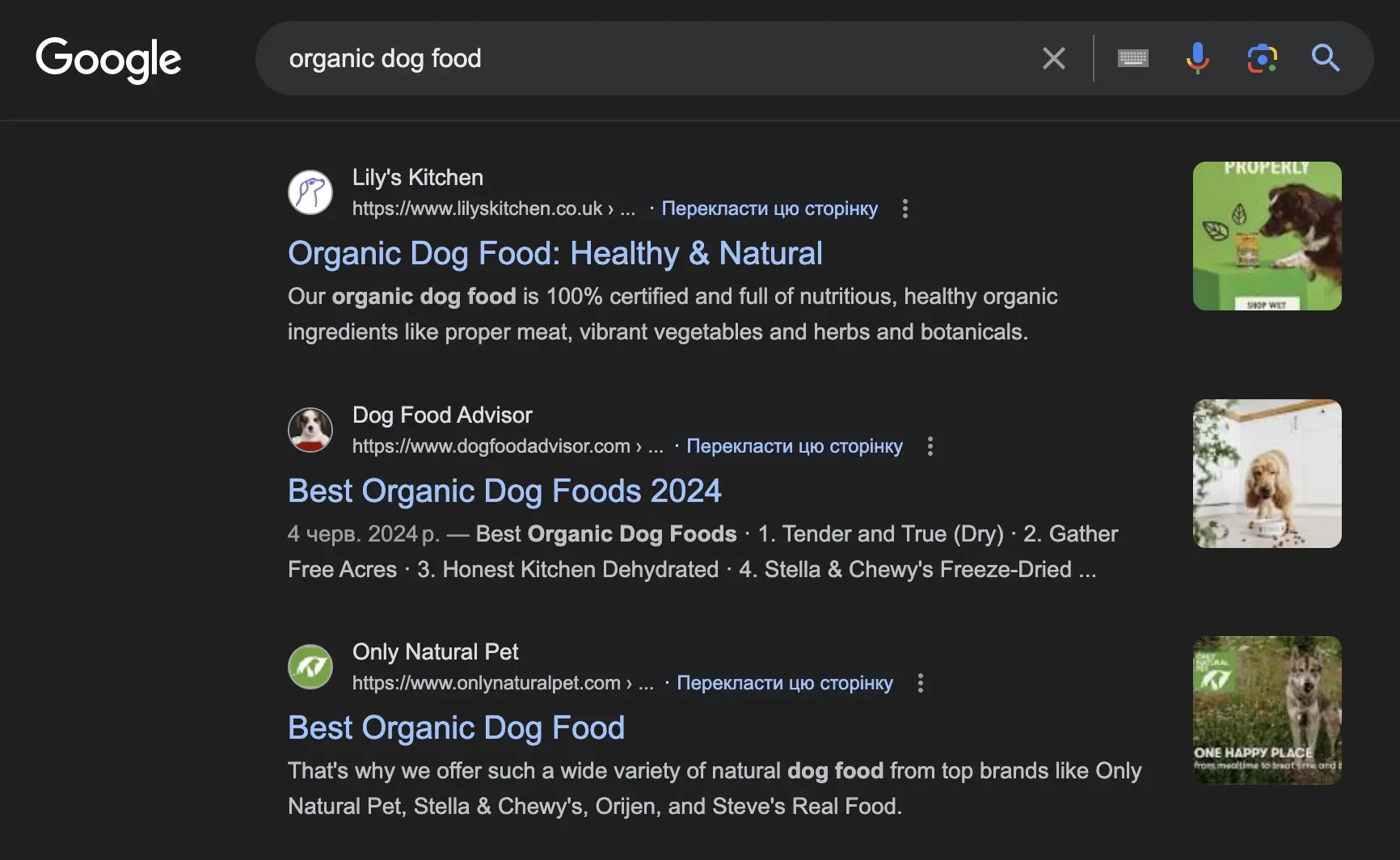
Create your main page copy and design elements
To keep potential customers engaged on your homepage, make sure its content is both informative and compelling. Here’s how to achieve this:
- Clearly explain what your business does and highlight what sets you apart from competitors
- Analyze top-ranking search results to understand what content Google favors for your target keyword. Include similar points to meet user expectations
- Naturally insert your primary keyword into the H1 tag and throughout your content
- Share useful information about your products and services, such as their benefits, features, and helpful how-to guides
Canva is a popular online-based graphic design tool used to create different kinds of design assets by both professionals and rookies. Canva homepage has a clean layout with a headline and sub-headline clearly explaining what the service offers. The top menu sections share useful information about brand’s offers targeted at specific audience groups, plans and pricing, learning resources, and more. The keywords targeted by Canva, such as graphic design software, online design website are inserted throughout the homepage content.
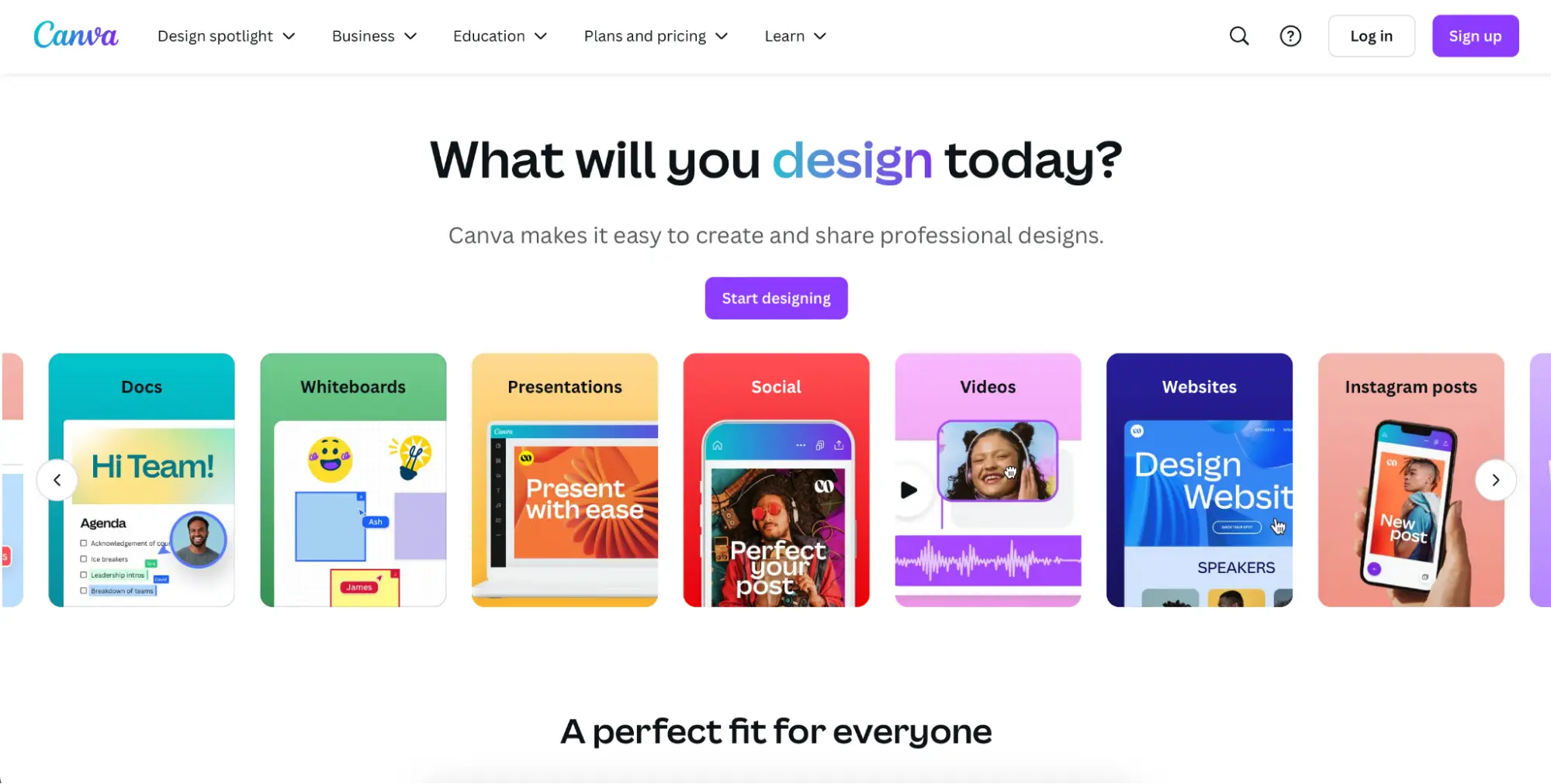
Add intuitive navigation
Intuitive navigation helps visitors quickly find what they need, minimizing frustration and keeping them engaged. This improves the user experience, boosts conversion potential, and signals to search engines that your site is well-organized, which can positively influence search rankings.
Here’s how to make your website’s navigation intuitive:
- Include major sections in the navigation menu: Ensure that key areas of your site, such as “Shop,” “About Us,” “Blog,” and “Contact Us,” are easily accessible from the main navigation menu. This helps users quickly find what they need and improves overall site usability.
- Link to key pages within your site: Create clear pathways by linking to essential pages throughout your site. This not only aids in navigation but also establishes a well-organized website hierarchy, which can boost SEO by helping search engines understand the structure of your content.
- Implement a search function: Add a search bar to enhance user experience by allowing visitors to quickly locate specific information or products.
- Make your navigation mobile-friendly: Ensure that navigation is easy to use on desktop and mobile to accommodate users on the go.
The navigation menu on the Sephora website presents different categories of goods with a dropdown showing under each category and expanding with more subcategories of goods. The navigation section is mobile friendly, and is easy to use on a smaller screen.
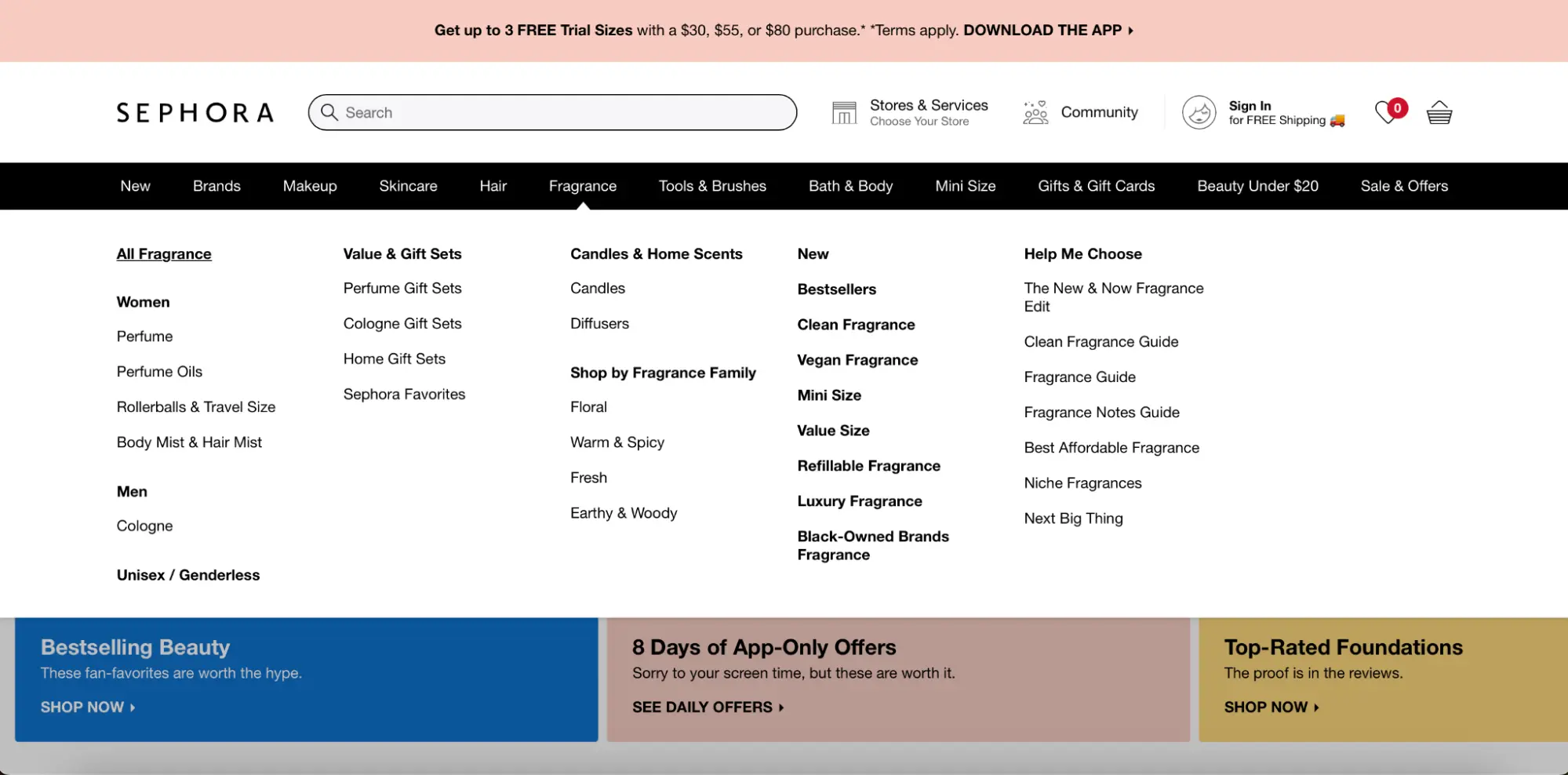
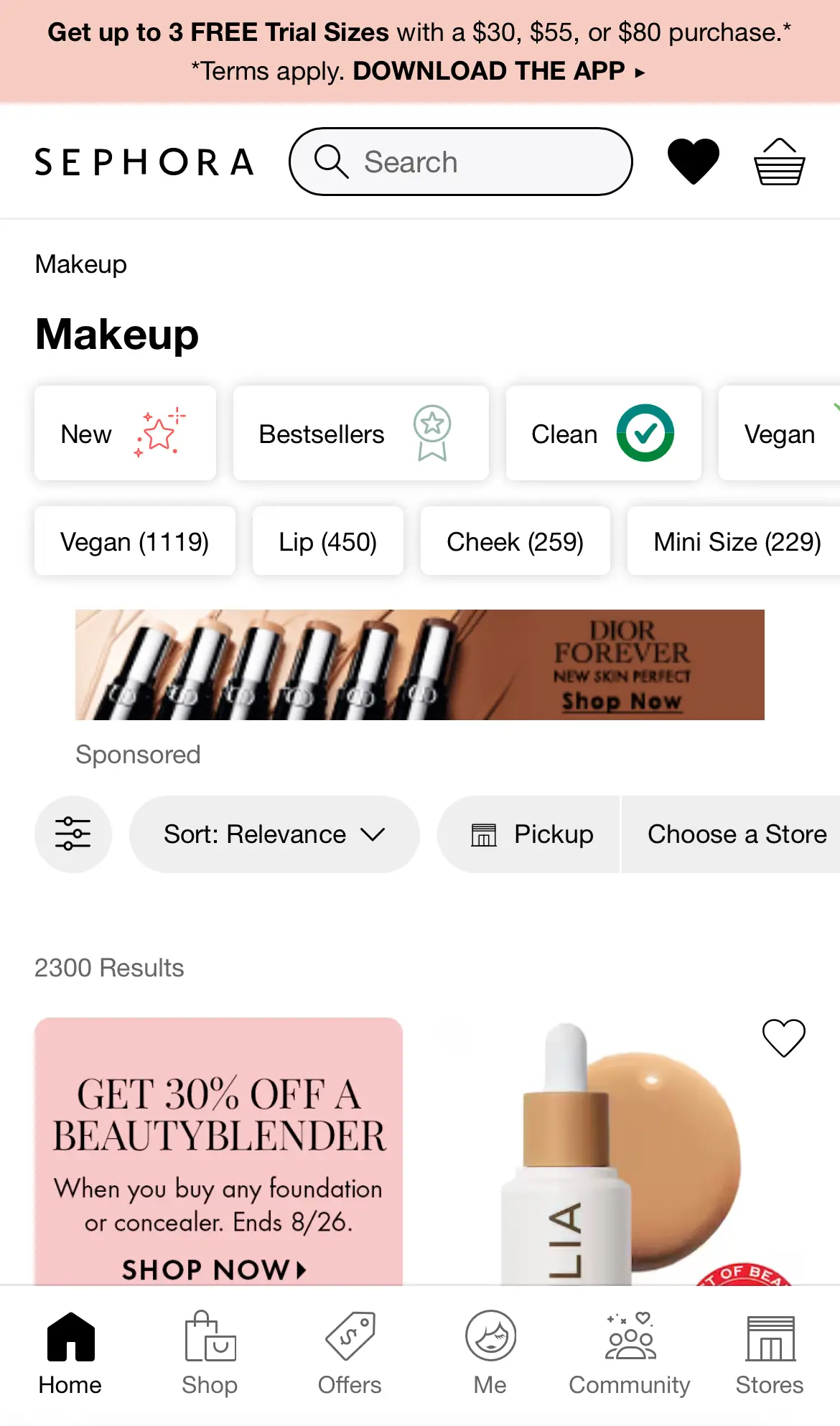
Examples of SEO-optimized homepages
Ever wondered why some brands do better than their competition on search engines? A big part of their success is the effort they put into optimizing their homepages for SEO. Tools like the Chrome Detailed SEO Extension are great for this—they quickly show you essential SEO metrics like title tags, meta descriptions, and headings. With these insights, you can see what’s working, what needs tweaking, and stay ahead in search rankings.
AirBnb
Airbnb’s homepage has a clean layout that is easy to navigate. The homepage clearly explains what the service offers—stays and experiences.
The title tag Airbnb | Vacation rentals, cabins, beach houses, & more fits the limit of up to 60 characters and includes the brand keyword “Airbnb” and a brief description of services presented on the homepage. The navigation is intuitive, and the content is well-organized with categories, experiences, and more.
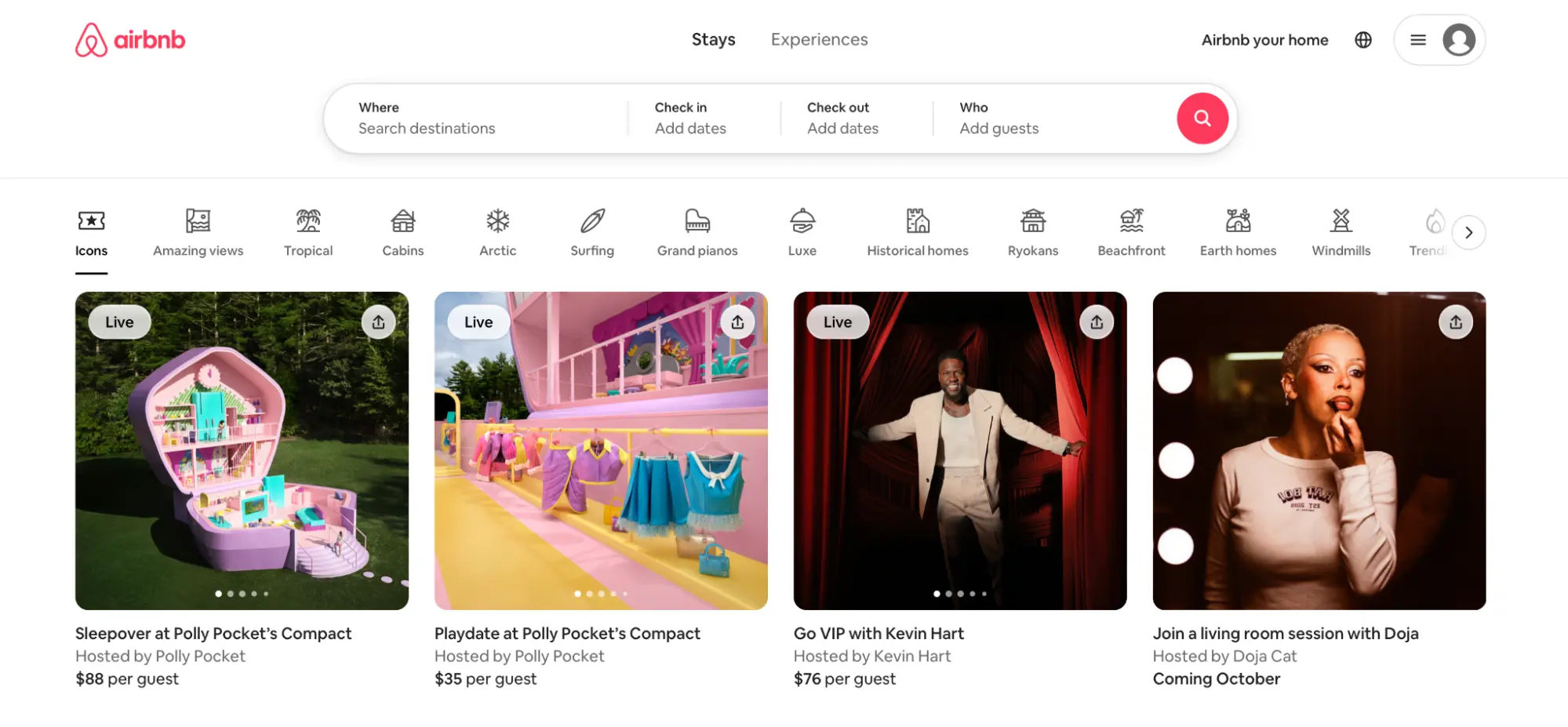
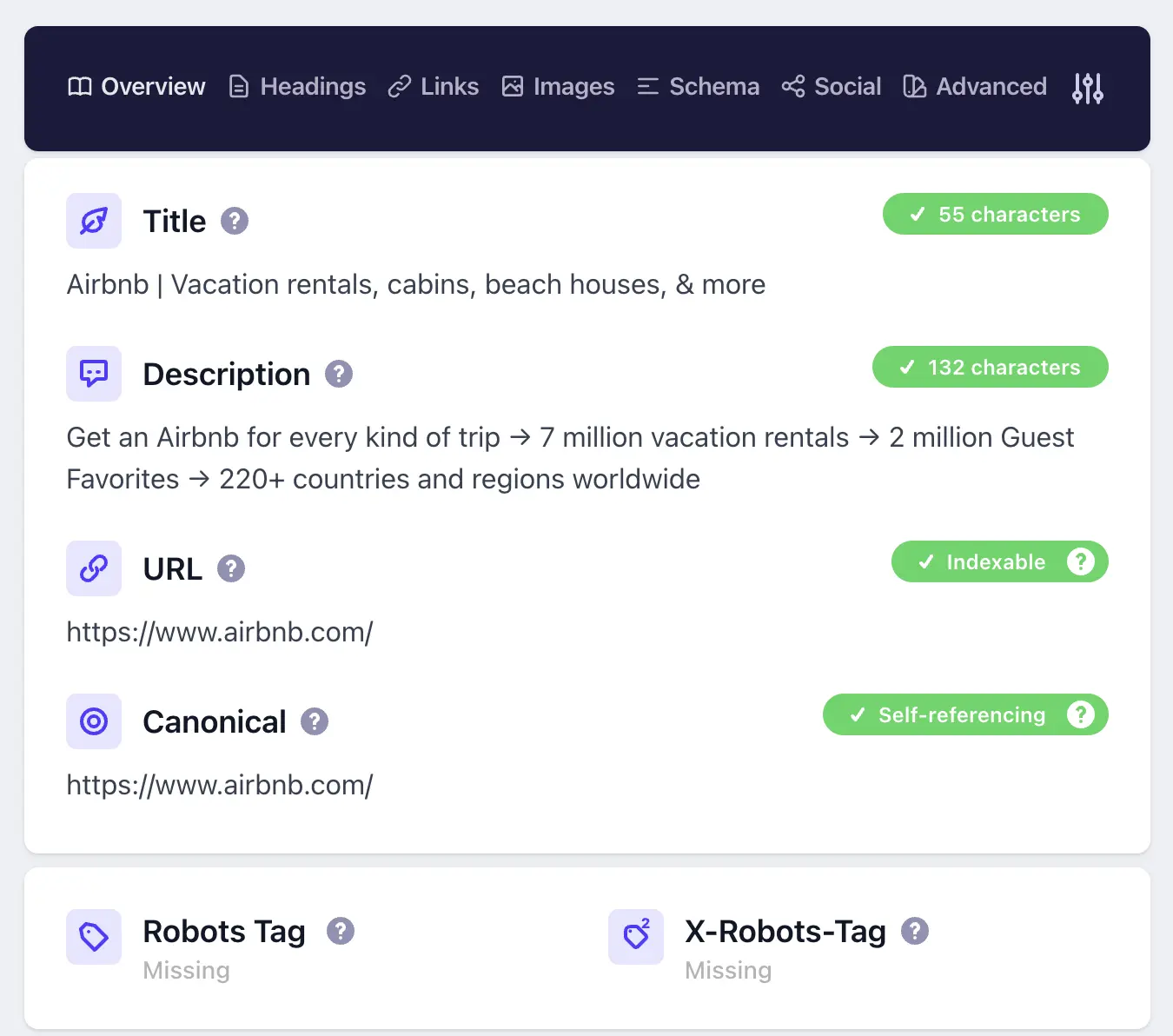
Etsy
Etsy’s homepage has a clear site hierarchy, optimized meta tags, and targeted keyword usage. It features engaging content, intuitive navigation, and internal linking, all of which enhance SEO.
The site is mobile-friendly, has fast load times, and regularly updates with dynamic, user-generated content. These factors together improve search visibility and attract relevant traffic effectively.
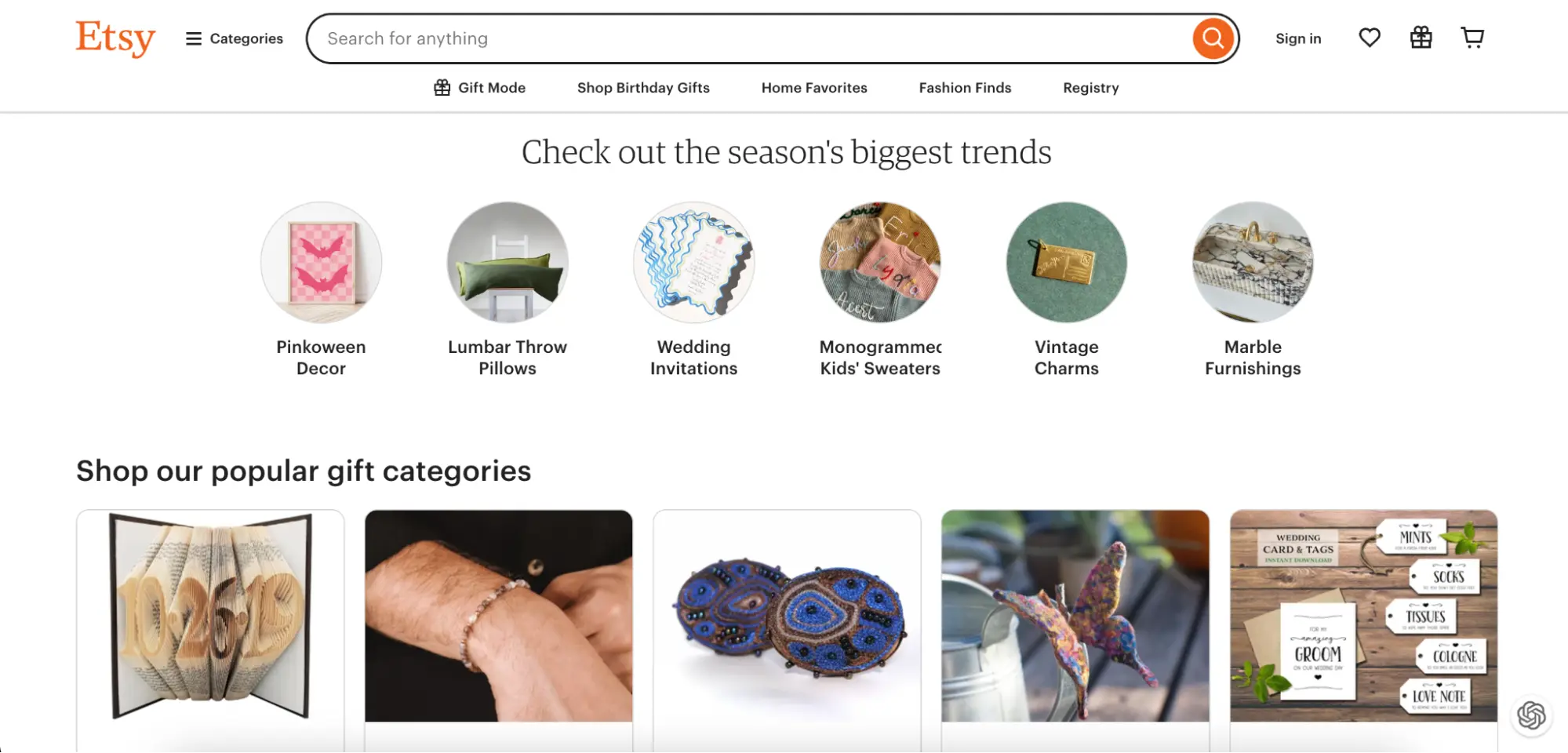
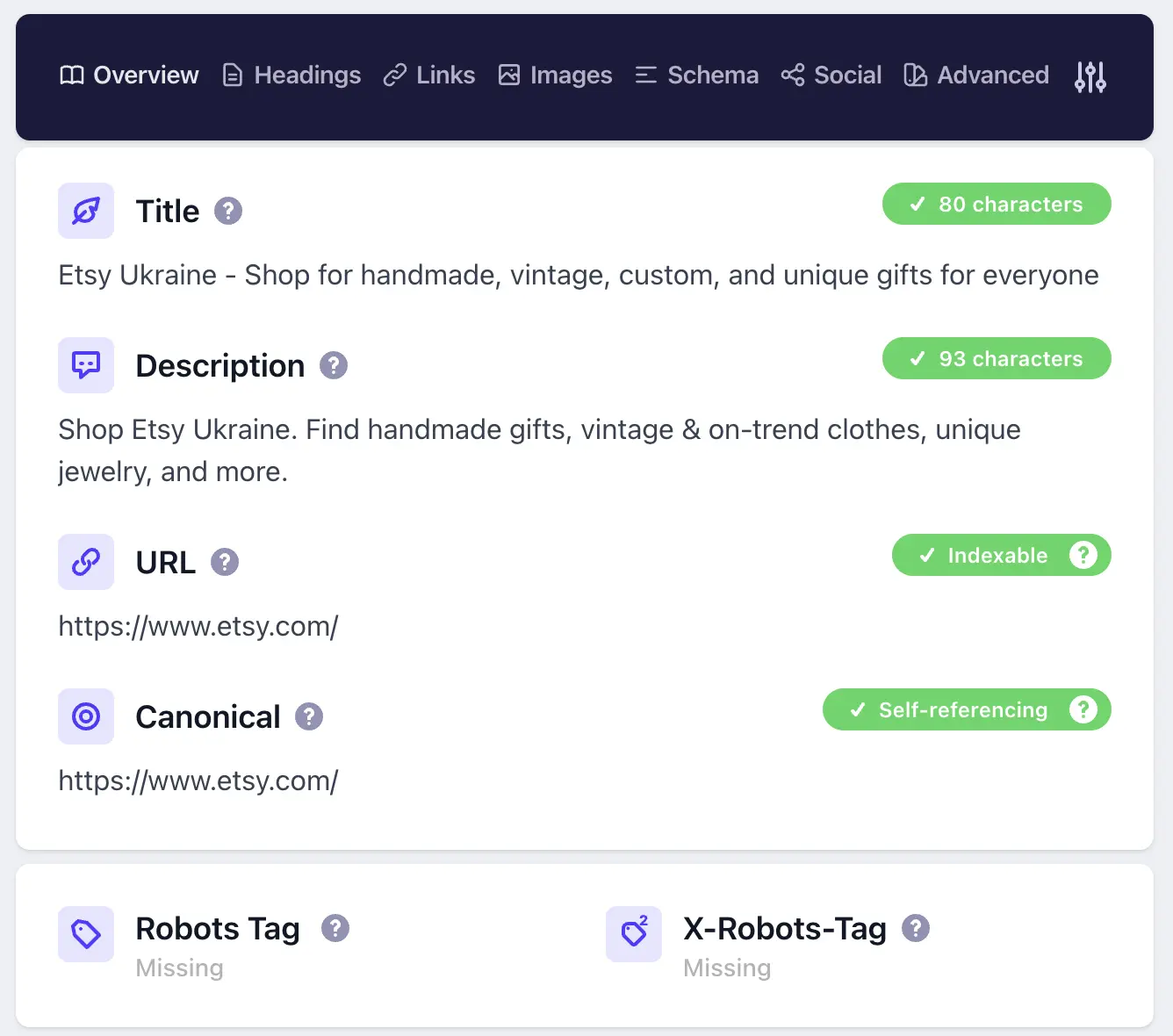
Gymshark
Gymshark’s homepage is well optimized for search engines with targeted keywords related to fitness apparel and workout gear. It features a clear site structure with easy navigation to categories like “Men’s” and “Women’s” clothing.
The meta tags are optimized for search, and the content highlights promotions, new releases, and popular items. The site is mobile-responsive, loads quickly, and regularly updates with fresh content and user-generated reviews, boosting its SEO and attracting fitness enthusiasts.
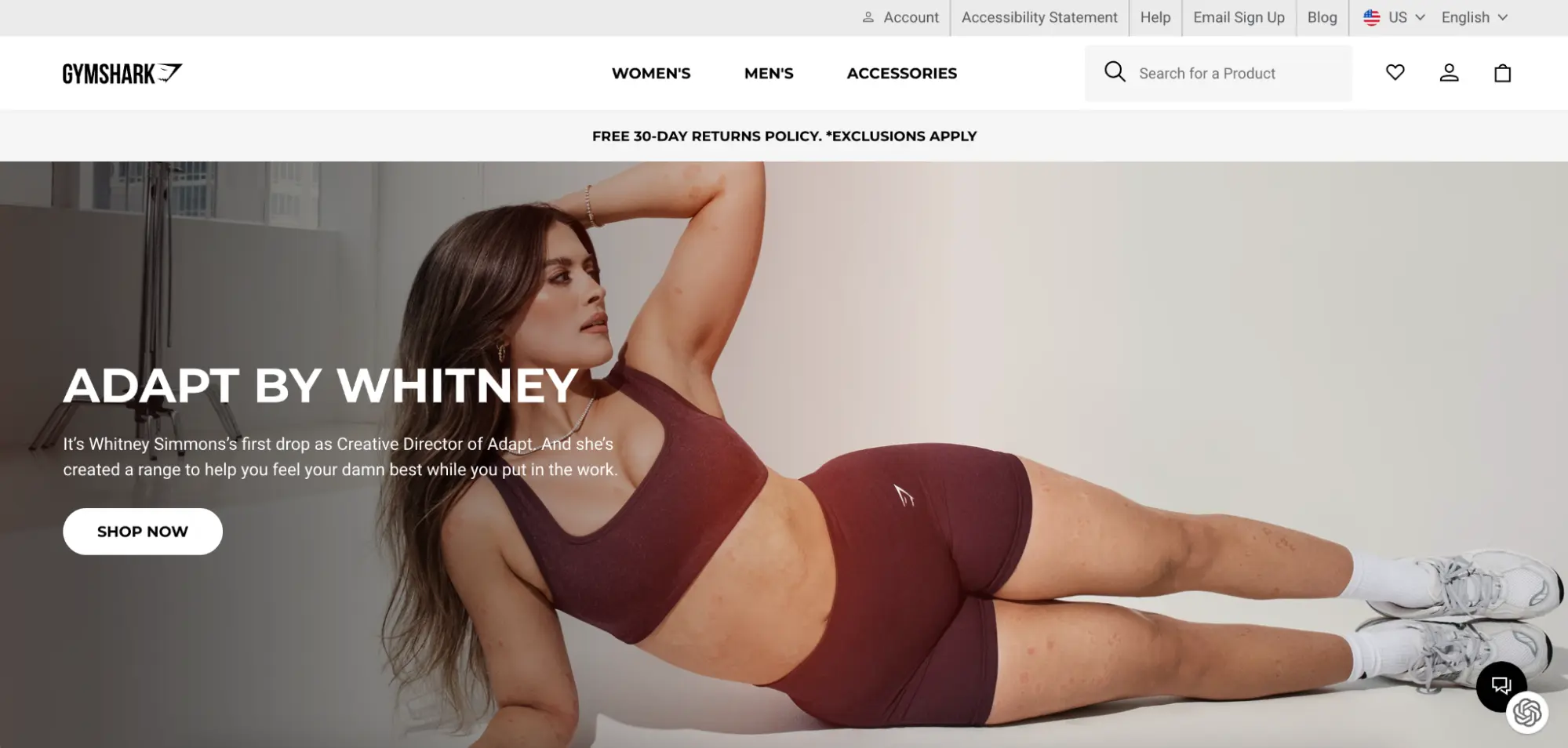

Learning from the world’s most well-known brands and analyzing SEO best practices they use, can help you optimize your homepage to not only attract and convert visitors but also improve your search engine rankings.
Build SEO-optimized landing pages with Instapage
Instapage is a top-tier landing page builder that makes it easy to create SEO-optimized landing pages that perfectly align with your ad campaigns.
Customers love using Instapage because of:
- Intuitive drag-and-drop builder that allows for designing visually appealing layouts without any hassle
- Library of 500+ customizable landing page templates
- AI assistance to generate headlines, CTAs, and more
- A/B testing tool to identify the most effective variations and automatically direct traffic to the best-performing pages
- Advanced personalization features that match visitor intent with relevant landing page experiences, ensuring each ad leads to a customized page
- Copy-matching capabilities that adjust content based on visitor data, such as keywords, firmographics, and demographics
Ready to create your optimized landing page? Start a free 14-day trial of Instapage now.

Try the world's most advanced landing page platform with a risk-free trial.
